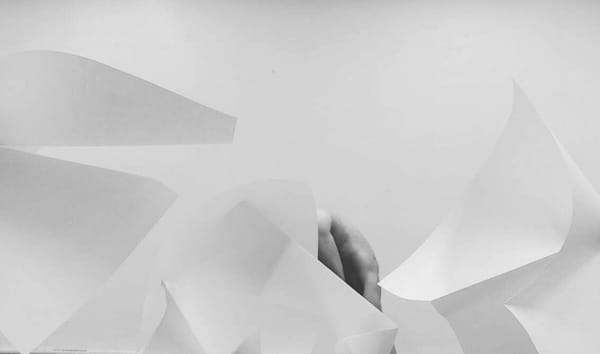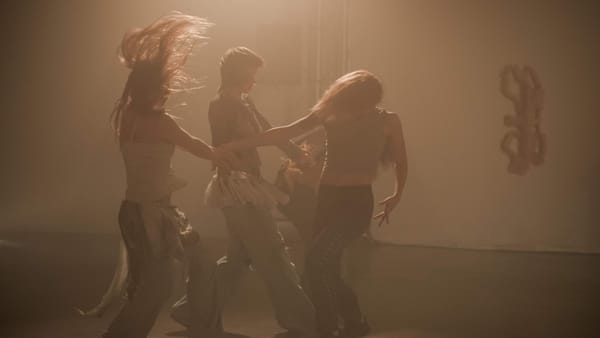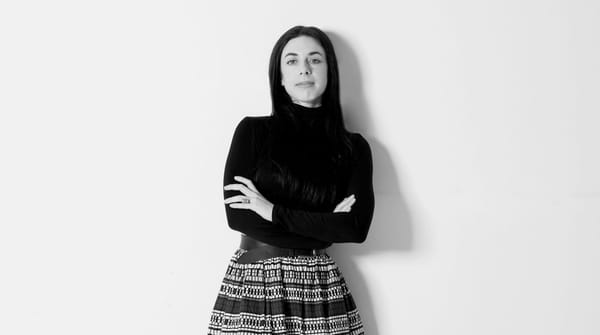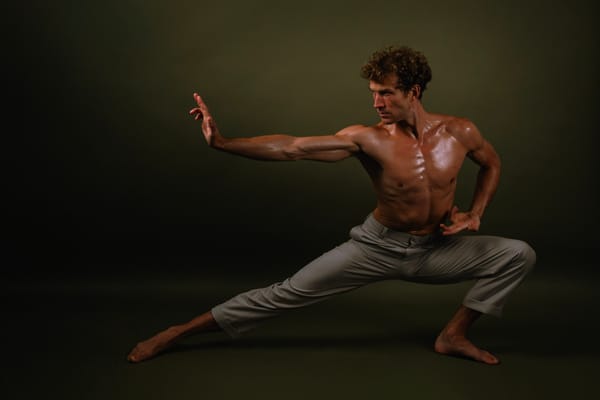In Touch with the Dead: In Pursuit of Tatsumi Hijikata
Choy Ka Fai's extraordinary journey from Singapore to rural Japan to the gates of the underworld in pursuit of an artistic collaboration that transcends death itself.
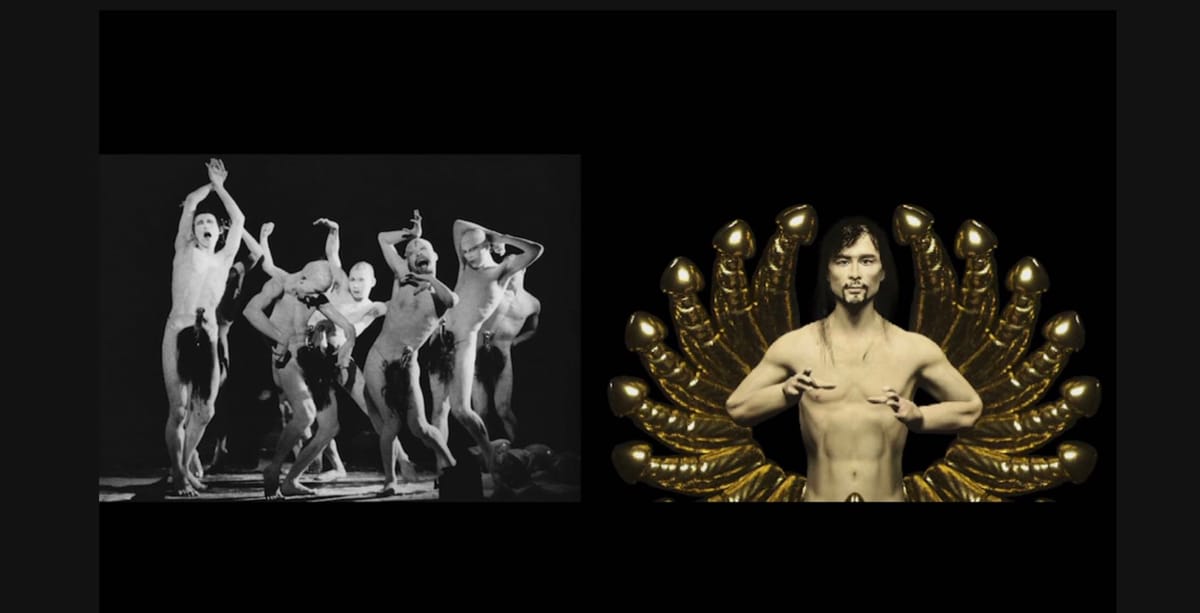
by Jana Al Obeidyine
Raw, inverted, grotesque bodies, twisted in excruciating pain, inhabit Ankoku Butoh: the dance of utter darkness.
The initial experience sent a shockwave through Tokyo, just as it did through New York, and its aftershocks can still be felt today. It was a turning point in the history of dance and human expression.
Tatsumi Hijikata is one of the founders of Ankoku Butoh, known today simply as Butoh. Born in 1928 in rural Tohoku, northern Japan, Hijikata used to play with physical gestures as a child. It is said that he would steal the gestures of family members and animals, trapping them in his body. When his sister died, Hijikata believed that she came to live inside him.
Hijikata moved to Tokyo as an adult in 1952. His first performance, Forbidden Colors, was an adaptation of Yukio Mishima’s novel of the same name. It portrayed the relentless pursuit of a young man by an older man (played by Hijikata), culminating in their entwined bodies rolling across the floor, and the slaughter of a chicken live on stage.
Nothing about Forbidden Colors was expected or accepted in 1950s’ Japan, and Hijikata was expelled from the Japan Dance Artists Association. His avant-garde performance, however, paved the way for diverse, rich collaborations with a wide range of contemporary Japanese artists across various disciplines.
The accumulation of these collaborations led, a decade later, to his second most acclaimed performance: Rebellion of the Body. Created in 1968 amid student demonstrations across the country, it featured a naked body, a huge golden phallus, cross-dressing, ecstatic moves, self-inflicted pain and his signature dead chicken. It ended with Hijikata hanging upside down on stage.
Hijikata is said to have believed that, within our bodies, underneath the flesh, there is a pure life that feeds on the body’s inner darkness. To free this life force, Hijikata attempted to turn the human skin inside out. Through ceremonial and ritualistic acts, he brought this unseen, muted inner life to the fore. He envisioned it as the authentic life-form lying dormant beneath both modernity and traditional Japanese aesthetics.
The malaise of post-war Japan revealed its true face in Ankoku Butoh. Chaos, violence, death, rebirth and metamorphosis are prevalent themes in Hijikata’s movement. And it seems that, in his dance of utter darkness, the body is the site of life and all possibilities of being — nothing is spared. It is in the human body that existence begins, transforms, ends and is reborn.
Wired Encounter: Making Contact Through Time and Space
In 2010, Choy Ka Fai, a young multidisciplinary artist from Singapore, saw an 8 mm film of one of Hijikata’s performances, Summer Storm (1973). He was so taken by the “color of Hijikata’s Butoh” that he wanted to learn from the master himself. That’s when the journey to connect with Hijikata from beyond the grave began.
At first, Choy thought about “translating archival footage into movement data,” then injecting Hijikata’s muscle memory into his body using electrode wiring. The experiment succeeded and Choy was able to sense Hijikata’s movement across time and space within his own body. That was Choy’s first digitally infused, physical encounter with the dead master. This taste of the experience made Choy desire a more profound relationship with Hijikata: he wanted to collaborate with him.
A Trip Down Memory Lane: Kamaitachi Embodied
But how can you collaborate with a spirit? How do you invite a ghost to the stage? Those questions took Choy on a trip to northern Japan, where Hijikata was born.
He spent time in a village in Tohoku, near Hijikata’s birthplace. This was also where he collaborated with renowned photographer Eikoh Hosoe on a photobook titled, Kamaitachi (1969). The photobook captured Hijikata’s improvisational performance of Kamaitachi, a mythological, weasel-like demon, who haunts rice fields and slashes people with a sickle.
Both Hijikita and Hosoe shared memories of a childhood spent in rural areas during the war. Their collaboration was a dark, organic, phantasmagorical fairy tale that fused shadow and light, body and landscape, the real and the supernatural. In Kamaitachi, Hijikata’s act is believable to the point where the viewer can sense the demon seeping into people’s everyday lives as a friendly and familiar being. Hijikata’s body and Hosoe’s lens manifest Kamaitachi and eternalize the creature’s presence within the rural Japanese landscape.
During his stay in the village, Choy spoke to locals who featured in the photographs from when they were children. Hijikata had left a strong impression on them. “I didn’t think he was human,” said one woman, giggling. Meeting the people in these photos brought him a little closer to Hijikata.
A Door to the Underworld: Speaking in Tongues
Choy’s next stop was at Osorezan, or Fear Mountain, a pilgrimage destination in Japanese folk religion. It lies on the Shimokita peninsula of Aomori, at the northern end of Tohoku. The sacred site is in the caldera of an active volcano and is believed, in Japanese mythology, to be one of the gates to the underworld.
Every year, during the Bodaiji temple's festival, people come to Osorezan to meet blind shamans known as Itako, who summon the spirits of the dead and deliver messages on their behalf. Choy and his team arranged to meet one, hoping to communicate with Hijikata’s soul.
The first session was on February 8, 2017. Hijikata’s spirit expressed sorrow for leaving our earthly world so early, and a desire to dance more and “create another sensation.” He agreed to provide Choy with inspiration. As unlikely as it sounds, a banana seller would become that source of inspiration, when Hijikata — through the medium — suggested working with “a middle-aged, male banana seller with a hat.” Such a suggestion coming from a soul sounds as surreal as Hijikata’s Butoh.
During a subsequent trip to Osorezan, Choy met a monk who convinced him to let go of his desire to speak to Hijikata, saying that “mixing two worlds is not a good thing, particularly for those who have left.” Choy took the monk’s advice and decided to pursue other ways of collaborating with the master.
Unbearable Darkness: A Paranormal Dance Experience
Diving into Hijikata’s archives, Choy was determined to immerse himself in Hijikata’s choreographic process more thoroughly this time. This trajectory led him to discover some of the key inspirations behind Hijikita’s work, such as Francis Bacon’s paintings and Vaslav Nijinsky’s choreography. Both influences can be seen in what remains of Hijikata’s ephemeral performances.
In an effort to bring Hijikata back to life using modern technology, Choy and the team created a dancing digital avatar to host Hijikata. Moving the past into the virtual space opened the door to all sorts of speculative possibilities. If Hijikata really was to come back to life in our digital global age, what would he choreograph? Or rather, as Choy asked, when discussing his performance piece Unbearable Darkness in 2018, “What is, choreographically speaking, humanely impossible but ghostly possible?”
In Unbearable Darkness, the past, present and future coexist in what Choy calls a “paranormal dance experience.” It offers an imaginative space in which the real and the virtual, the corporal and the ghostly, the living and the afterlife all converse quite fluently.
Looking at where Hijikata’s Butoh began, a little short of a century ago, he continues to live and dance unhindered from beyond the grave.
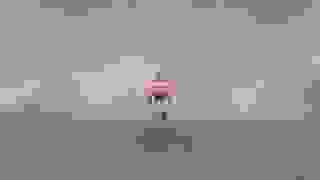
This story was originally published in A Dance Mag issue 03: Touch.



